Book choices for today:
Growing Crystals Ann Squire
Crystal & Gem R. F. Symes
Flower Garden Eve Bunting
Science: (first circle)
Need for lesson – Two wide mouth jars, pipe cleaners, Epsom salt, Borax, food coloring, and hot water (not boiling). Measure about 3-4 tablespoons very each cup of water.
Science 75
We have learned about different kinds of rocks. The whole Earth is made up of rocks and minerals. You need minerals to make rocks, but you don’t need rocks to make minerals. All rocks are made of minerals. Minerals are made of chemicals and organized into groups. The chemicals that a mineral is made of determines what shape it gets to be. As minerals form in the Earth’s crust, they sometimes grow in a particular three-dimensional geometrical shape called a crystal. Crystals are in metals like gold and silver. They are also in precious stones like diamonds and rubies. You can also see crystals in ice, sugar, snow, and salt. Most of the Earth’s crystals were formed millions of years ago. Crystals form when the liquid rock from inside the Earth cools and hardens. Most mineral crystals take thousands of years to grow, but some like salt can grow and form quickly.
We are going to try and grow some crystals right here in the classroom. As we have said you can see crystals in things like salt. So we have some Epsom salt that we can use to watch crystals form. We also have something called Borax. We will try both and see what kind of crystals form in each jar. Let’s make a shape out of the pipe cleaners. We can do a circle and a heart. Then we need to tie it to a pencil or a nail file because we want it to hang inside the jar of liquid. It is important that the heart and circle shape do not touch the jar on the sides or on the bottom. We can make the liquid mixture with the salt and one with the Borax. We will also add food coloring to one of our liquid mixtures. We want to stir until the salt and Borax have dissolved. What does that mean do you think? Okay, now we careful put them in s special place and just let it sit. We do not want to disturb the jars. When we come to school tomorrow, I wonder if what we will find?
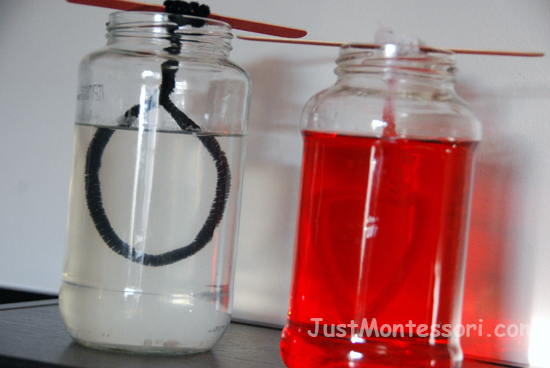
Botany: (second circle)
Need for lesson – The book, Flower Garden or other book that highlights a kind of garden along with a work or art idea related to the story.
Have a brief review of the many things you have learned about gardens. Talk about how the garden is doing at your school and/or the seeds that the children planted.
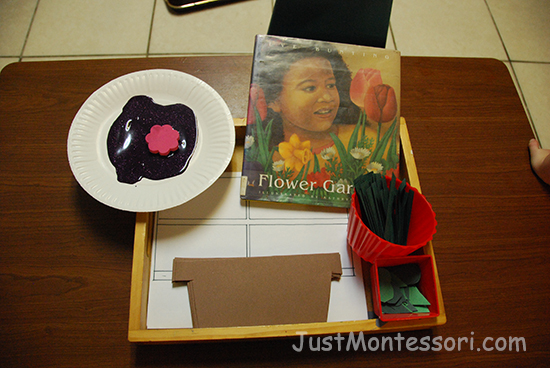
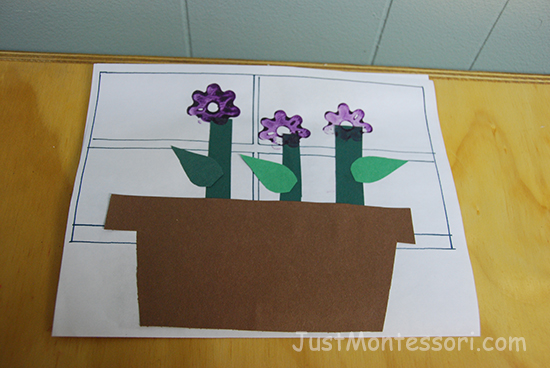
Additional Works:
Flower Pressing – Talk with the children about how to dry flowers flat and use them to make pictures, cards, or gifts. Books can also be used to place flowers in. Plan a project using the flowers when they are ready.
Flower Garden Box – I made these flowers with craft sticks and felt. Children design the ‘window box’.
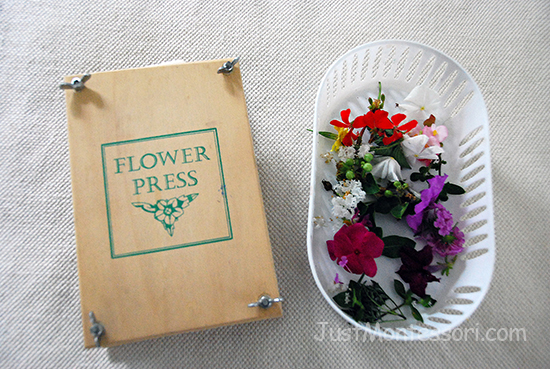
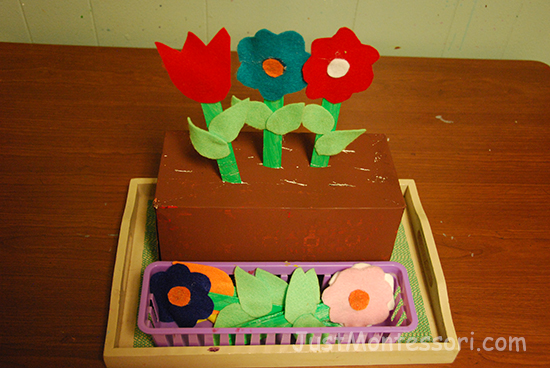
Botany: (first circle) / Day 5
Need for lesson – The book, Cheers for a Dozen Ears or other book of choice. This is a story of a family that goes to the farm during the Summer to buy some fruits and vegetables. Discuss with the children that near the end of the Summer many farms and gardens have plenty of foods to choose from. I made this story into a Book on the Shelf work. I used clay to make the foods and painted them. You can buy the clay already colored to make the foods.
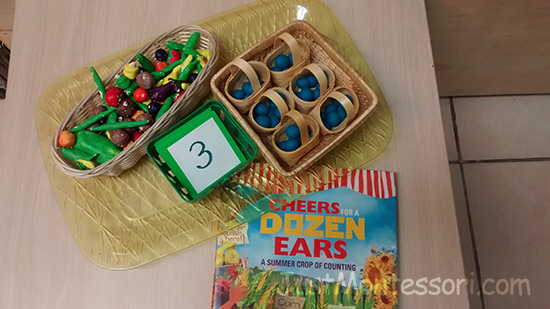
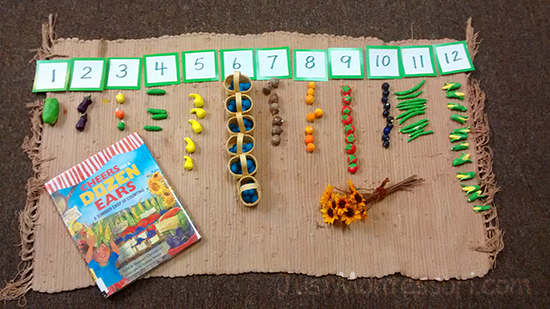
Use this day to also review any materials and information from the month so far. Keep checking the compost bin and discuss any changes you see happening. Keep watching the terrarium and discuss if water droplets are seen and what it means, what is happening? Look at your crystals and discuss that as well.
Buy Weeks 31-34 PDF
-
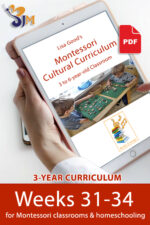 (I) Weeks 31-34$25.00
(I) Weeks 31-34$25.00
